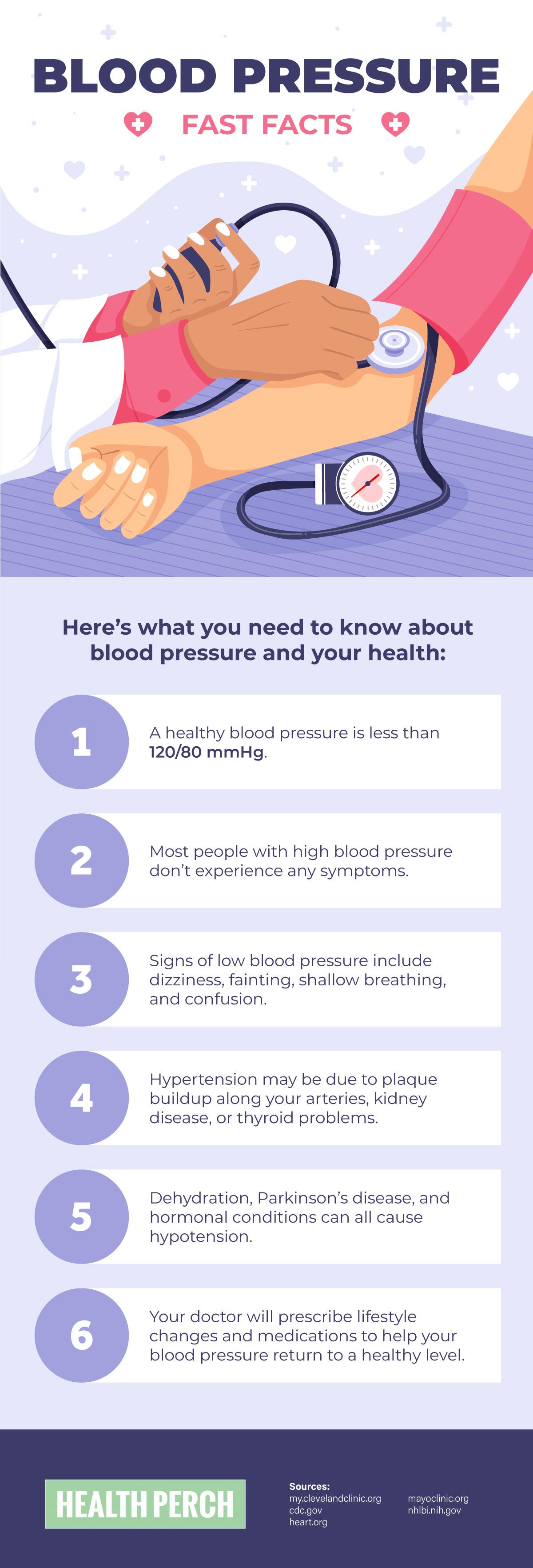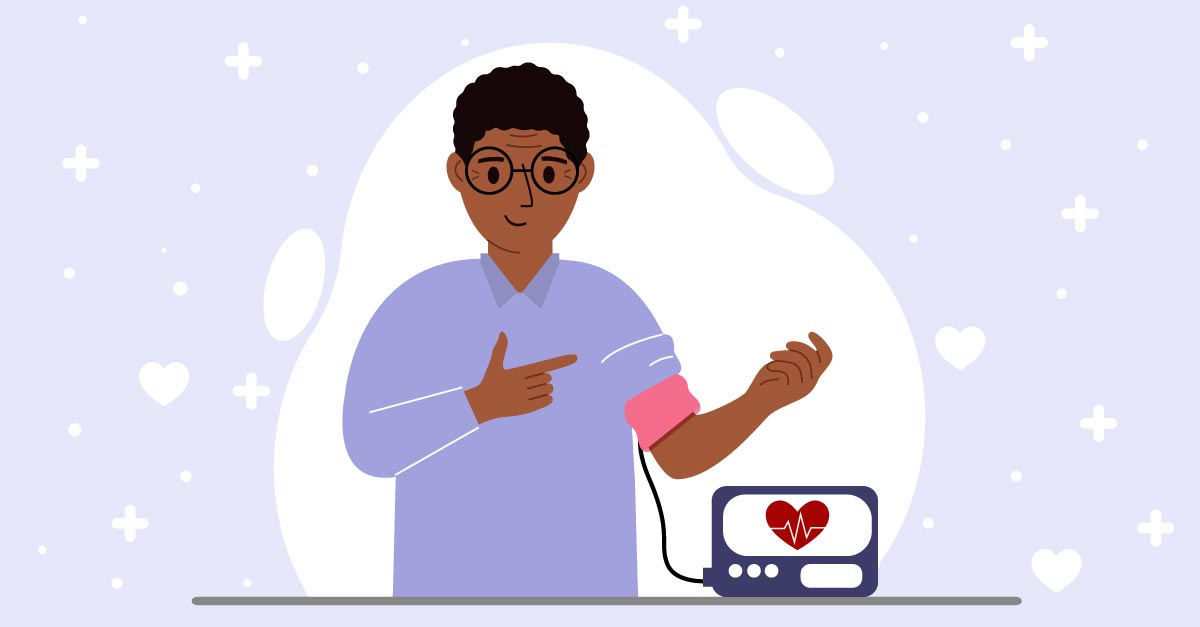At nearly every doctor’s appointment, a healthcare professional will take your blood pressure reading. We all know it’s a good thing to keep your levels in a range, but what do they mean for your overall health? Keep reading to learn more about how your doctor uses your blood pressure to better understand what’s happening in your body.
What Is Blood Pressure?
With every beat, your heart pumps blood throughout your body. This blood flow brings the oxygen and nutrients your organs, muscles, and other tissues need to function. Your arteries carry oxygenated blood away from your heart to the rest of your body. When blood is pumped through your arteries, it creates pressure that presses on the artery walls. This pressure is known as your blood pressure.
At the doctor’s office, you’ll hear your blood pressure given as two numbers. The top number — known as your systolic blood pressure — refers to the artery pressure when your heart beats. The bottom number — or diastolic blood pressure — measures pressure when your heart is at rest between beats.
According to the American Heart Association (AHA), a healthy blood pressure is less than 120 mmHg systolic and less than 80 mmHg diastolic (120/80 mmHg). You may hear your healthcare provider say your measurement is “120 over 80.” Keep in mind your blood pressure changes throughout the day as well. It peaks in the middle of the day and falls again in the evening.
What Is High Blood Pressure (Hypertension)?
An elevated or high blood pressure reading lets your doctor know you may be at risk of developing other health problems. The AHA explains that you have elevated blood pressure if your systolic reading is 120-129 mmHg and your diastolic is less than 80 mmHg. If you don’t take steps to lower your blood pressure at this point, you may develop high blood pressure later on.
Also known as high blood pressure, hypertension is a medical condition that requires intervention or treatment. The AHA defines hypertension in stages:
- Stage 1: 130-139 mmHg systolic or 80-89 mmHg diastolic
- Stage 2: Higher than 140 mmHg systolic or higher than 90 mmHg diastolic
- Hypertensive crisis: Higher than 180 mmHg systolic and/or higher than 120 mmHg diastolic (this is a medical emergency)
Most people don’t experience any symptoms of high blood pressure. In some cases, you may experience shortness of breath, headaches, or nosebleeds.
What Is Low Blood Pressure (Hypotension)?
Low blood pressure or hypotension is diagnosed when your reading is below 90/60 mmHg. Some people have a condition known as orthostatic hypotension. This occurs when blood pressure drops and stays low after standing up from a sitting position.
People with low blood pressure may have the following symptoms:
- Lightheadedness or dizziness
- Passing out (fainting)
- Confusion
- Blurry vision
- Fast and shallow breathing
- Changes in behavior
Blood Pressure and Your Heart Health
Your doctor uses your blood pressure to learn more about your heart health, in addition to your overall health. The following sections review what high and low blood pressure readings may mean for you.
High Blood Pressure: What Does It Mean?
If you have an elevated or high blood pressure level, you may have an underlying condition causing it.
Some people have atherosclerosis or plaque buildup along their artery walls. This buildup narrows the arteries, making it harder for blood to flow through. Think of your arteries like clogged pipes — as your heart tries to pump blood, the pressure keeps building up behind the clog.
High blood pressure can also be caused by an underlying health condition. Known as secondary hypertension, symptoms of this complication can appear suddenly. Examples of other conditions that raise blood pressure levels include:
- Thyroid problems
- Tumors on the adrenal glands (small glands that sit on top of your kidneys and make hormones)
- Kidney disease
- Problems with your heart or blood vessels that have been present since birth (known as congenital defects)
It’s important to treat high blood pressure with medication and lifestyle changes. The Centers for Disease Control and Prevention (CDC) notes that hypertension raises your risk of heart disease, heart attack, stroke, and kidney disease.
Low Blood Pressure: What Does It Mean?
You may think low blood pressure is nothing to worry about, but this isn’t always the case. Like high blood pressure, hypotension may be caused by other conditions, including:
- Dehydration
- Life-threatening conditions, such as a blood clot in your lungs (pulmonary embolism) or an irregular heart rhythm (arrhythmia)
- Complications during pregnancy
- Neurological conditions like Parkinson’s disease
- Conditions affecting your hormonal balance, like diabetes or Addison’s disease
- Low nutrient levels, including folic acid and vitamin B12
While it’s talked about less, low blood pressure levels can also become dangerous if they’re left untreated. Hypotension can cause dizziness or fainting, putting you at risk of falling and injuring yourself. You’re also more likely to have a stroke or develop heart problems. Your doctor may have you drink more fluids if you’re dehydrated. They can also prescribe medications that raise your blood pressure.

